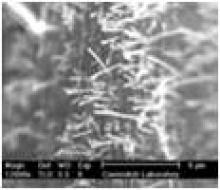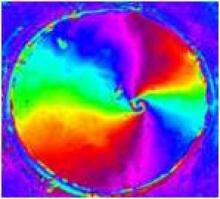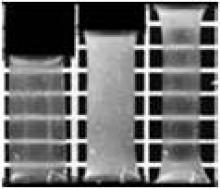The work in the group is both theoretical and experimental; we also have an advanced chemical synthesis facility that allows the designing and studying of new materials. In theory, the focus is on various problems in soft matter physics: modelling of polymers and crosslinked networks in equilibrium and dynamics; quenched random disorder affecting structures and phase transformations in soft matter; morphology and kinetics of phase ordering in mixtures, block-copolymers and colloidal composites; formation and evolution of helices in chiral polymers; cell biophysics; liquid crystals; granular systems; cellular solids; 2D monolayers, etc.
One of the key ongoing theoretical studies examines the semiflexible filaments (representing anything from a carbon nanotube, to amyloid fibrils or actin filaments, to an ordinary semiflexible polymer chain). In the limit of high rigidity we find that both the equilibrium dynamics and the relaxation of fluctuations change dramatically from the classical "Edwards' style" polymer physics. Networks of these filaments represent, for example, the actin cytoskeleton - and so is intimately related to the biomechanics of cells.
In experiment, many of our key areas are explained in detail in other BSS links. Other experimental approaches include the development of new nanocomposite materials (with carbon nanotubes or aggregated peptide filaments); Xray, optical and light-scattering studies of structure; rheology and dynamic-mechanical studies, as well as developing applications in shape-memory textile fibres; tuneable lasers; vibration damping and actuators. Semiconducting polymers offer new opportunities for devices that use blends and composites. Their performance is intimately tied in to microstructure and the processing routes.
Carbon nanotube/polymer composites offer new physical effects, previously unknown in either component system. Most remarkable is the photo- and electrically induced actuation. Physics of liquid crystals is our traditional strength, with new developments in areas of colloids and topological defects. Importantly, liquid crystalline order (orientational or lamellar) becomes increasingly relevant in our cell biophysics research. Crosslinked liquid crystalline elastomers represent a genuine new state of matter. Reversible shape-memory effects naturally present in such systems lead to thermal, photo, and solvent-induced mechanical actuation in 'artificial muscles'; soft elasticity opens new routes to dynamics, damping and micro-rheology.



